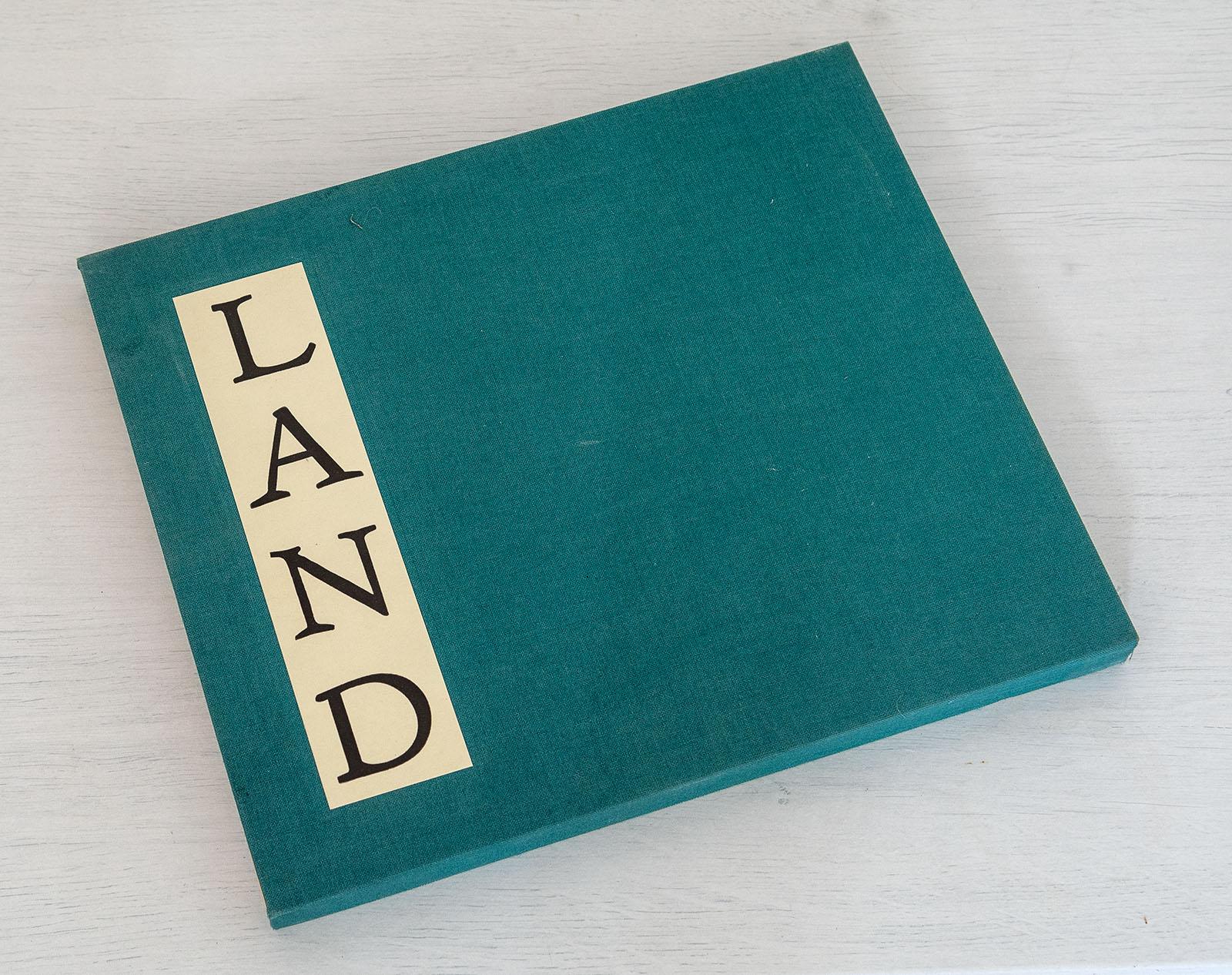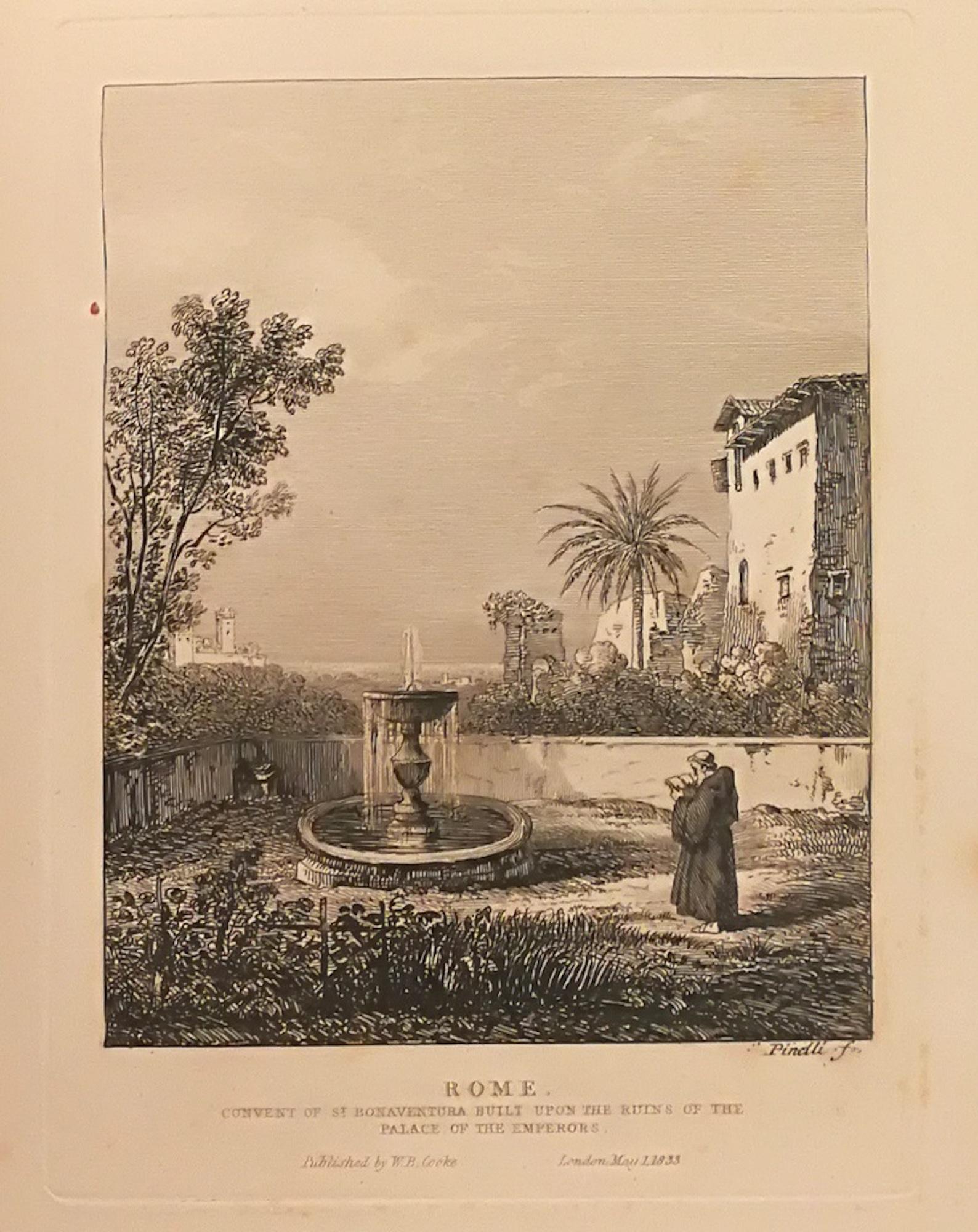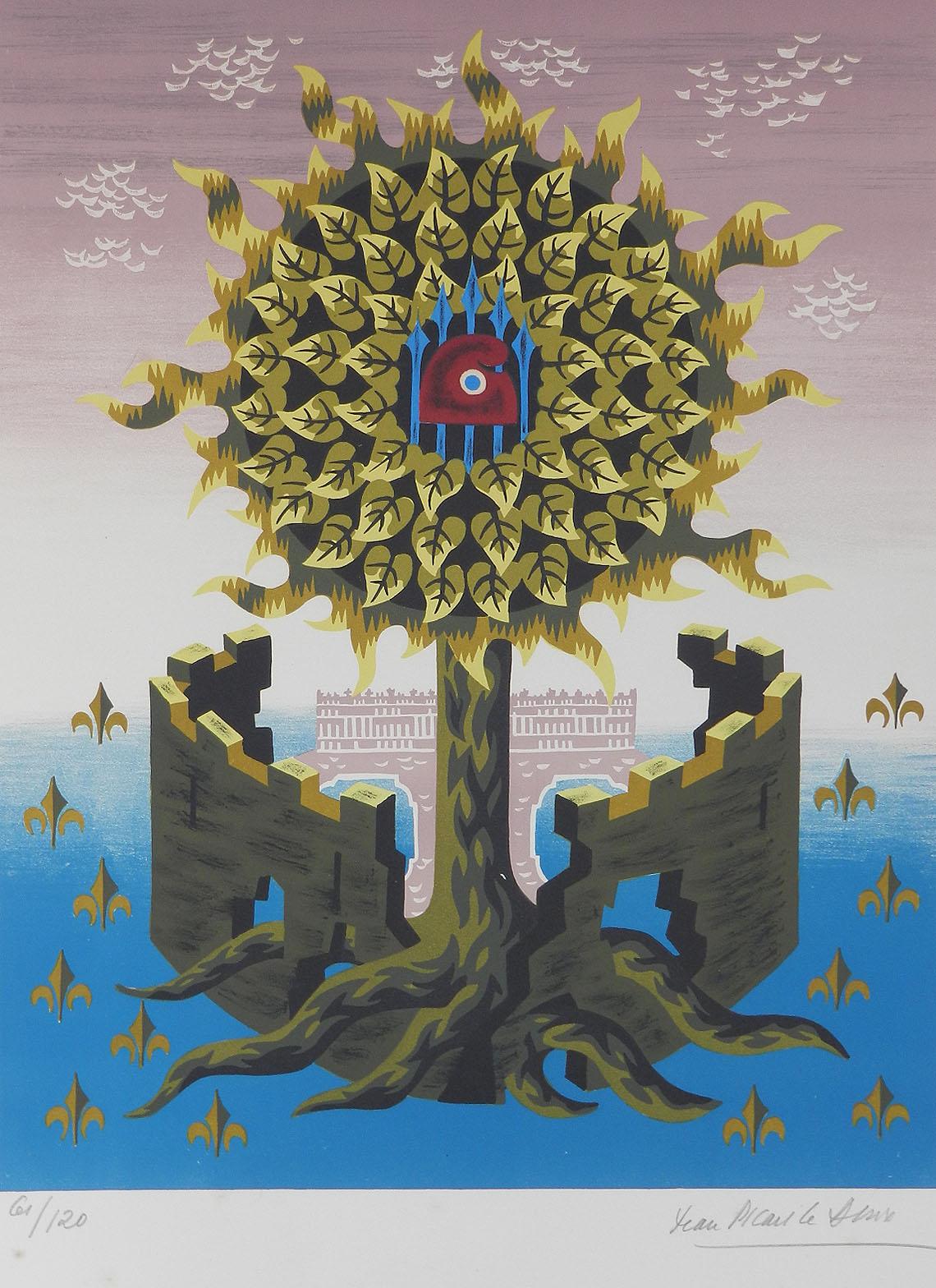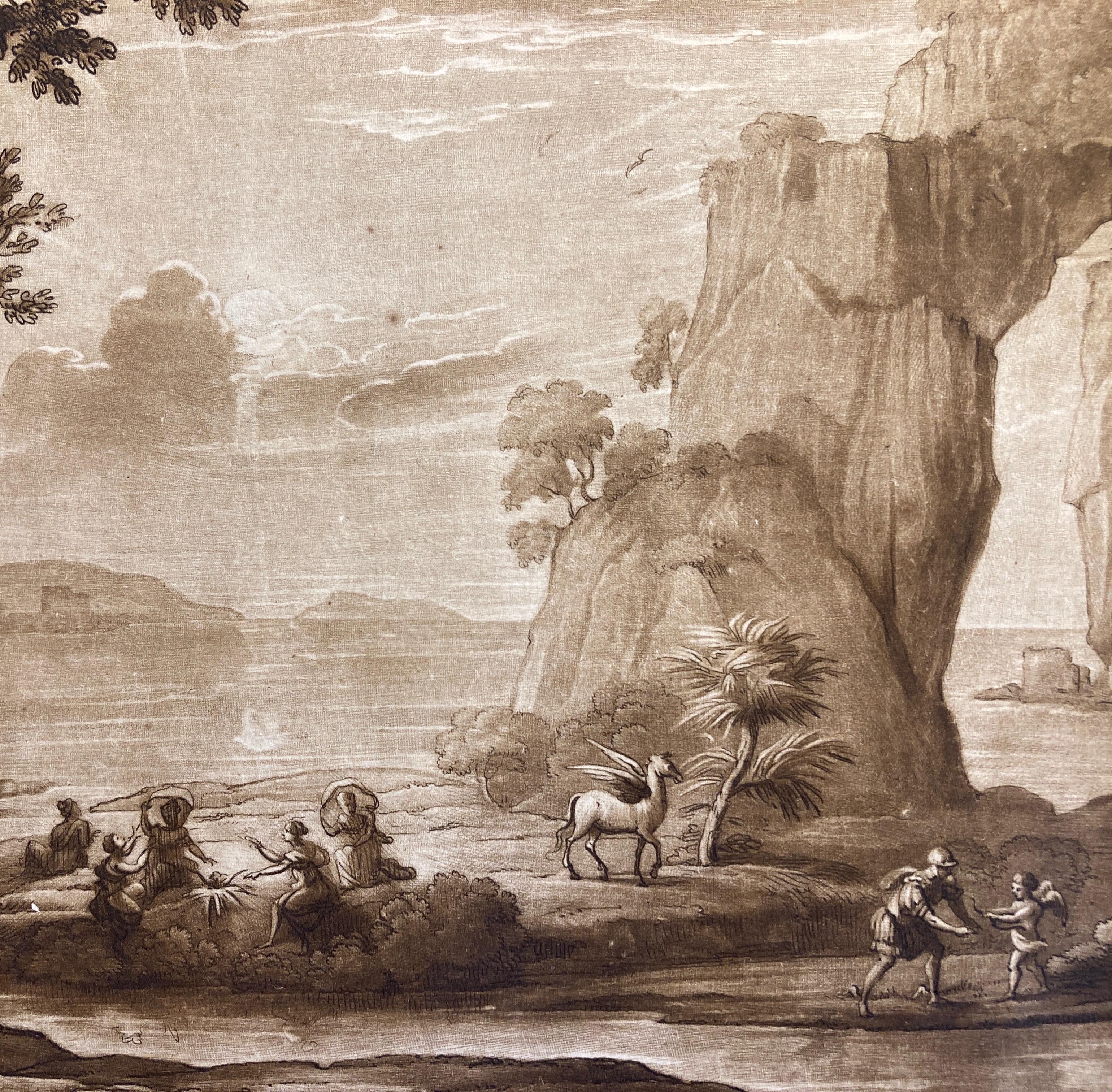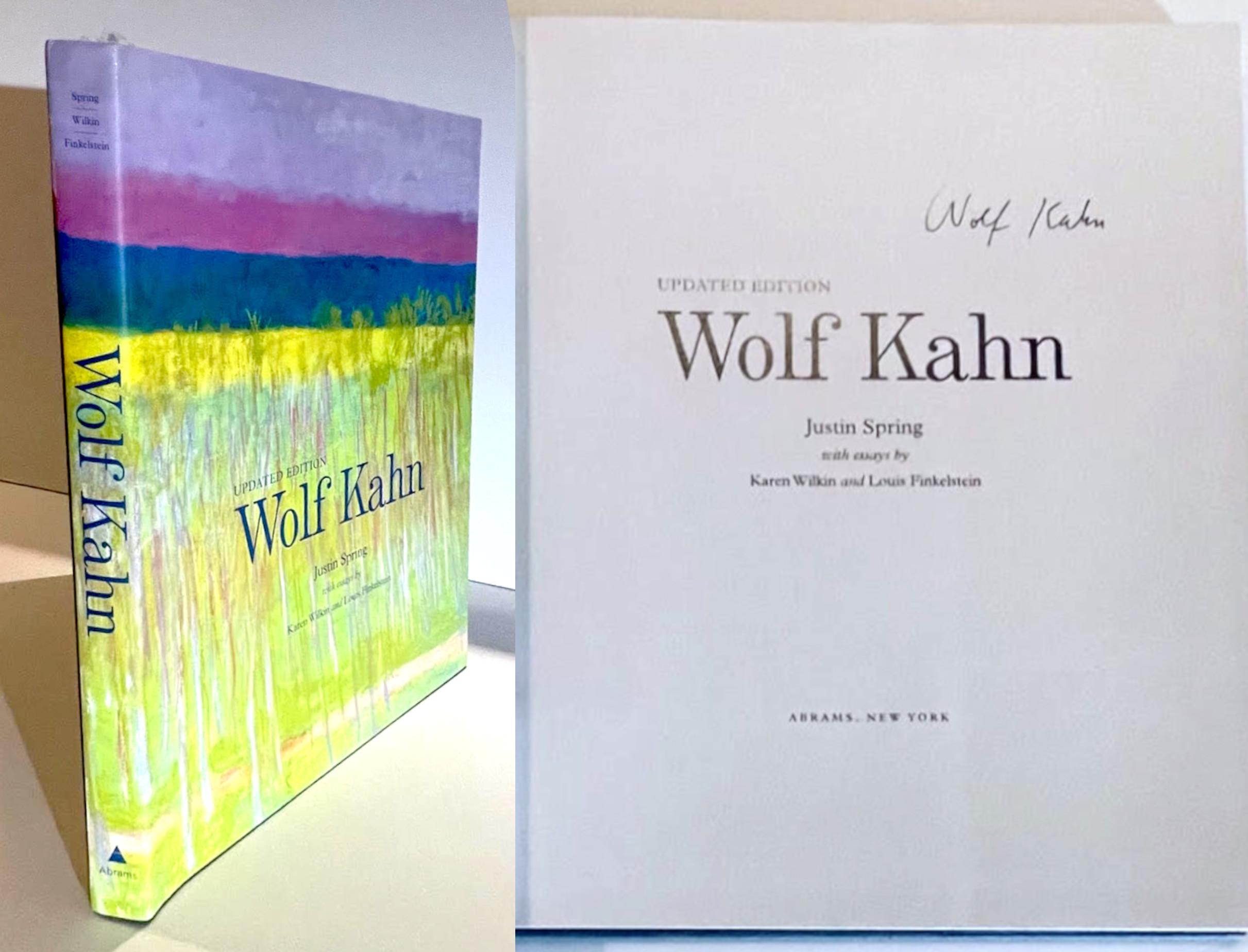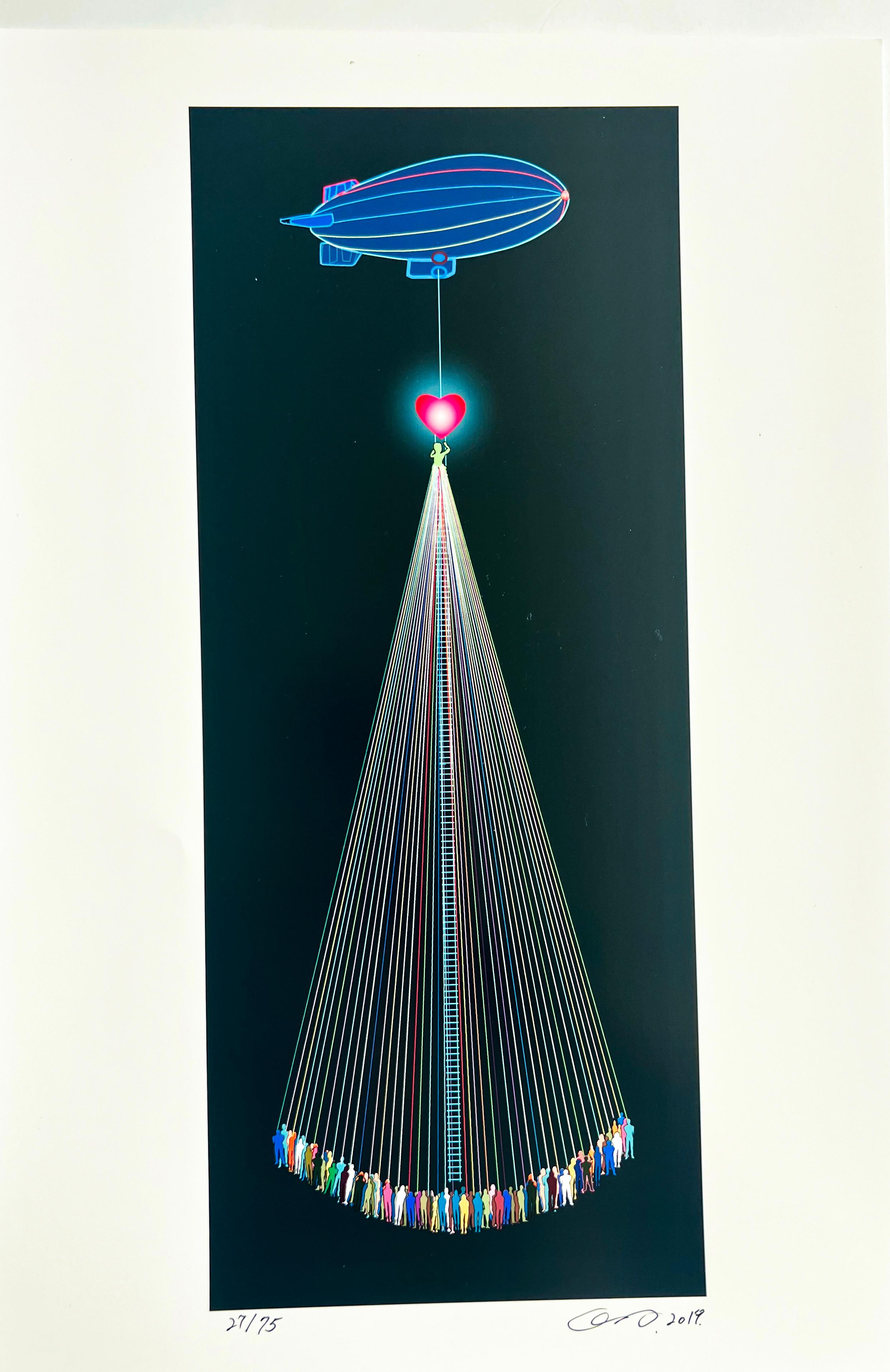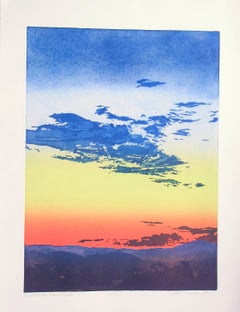
Untitled (Creek and Trees)
View Similar Items
Want more images or videos?
Request additional images or videos from the seller
1 of 10
George Elbert BurrUntitled (Creek and Trees)1923
1923
About the Item
- Creator:George Elbert Burr (1859 - 1939, American)
- Creation Year:1923
- Dimensions:Height: 16.5 in (41.91 cm)Width: 13 in (33.02 cm)Depth: 1 in (2.54 cm)
- Medium:
- Movement & Style:
- Period:
- Condition:very good to excellent condition.
- Gallery Location:Denver, CO
- Reference Number:Seller: DCG-137581stDibs: LU273914623
About the Seller
5.0
Platinum Seller
These expertly vetted sellers are 1stDibs' most experienced sellers and are rated highest by our customers.
Established in 1979
1stDibs seller since 2013
264 sales on 1stDibs
Typical response time: 5 hours
More From This SellerView All
- Comanche Dance, Ildefonso Pueblo, New Mexico Southwest Framed EtchingBy Gene KlossLocated in Denver, COComanche Dance at San Ildefonso Pueblo (New Mexico). Etching and drypoint, artist's proof from an edition of 50 prints. Presented in a custom frame, outer dimensions measure 22 ¼ x 18 ½ x ½ inches. Image size is 11 ¾ x 14 ½ inches. Print is clean and in very good vintage condition - please contact us for a detailed condition report. Expedited and international shipping is available - please contact us for a quote. About the Artist: Gene (Alice Geneva) Kloss is considered one of America’s master printmakers. She was born in Oakland, California and established herself as an artist on the West coast. Kloss was introduced to etching by Perham Nahl while at UC Berkley. She graduated in 1924, and in 1925 married poet Phillips Kloss. In her late twenties, Kloss moved to Taos, New Mexico and began her life’s work of the New Mexican landscape and peoples. It was at this time that she received national acclaim. Her artwork exudes an unmistakable content and style. Enchanted by the architecture, mountainous landscapes and rituals of the inhabitants, Kloss captured the beauty of the Southwest and surrounding areas. Her style was bold yet deftly simple, masterfully expressing the elusive Southwestern light...Category
1980s American Modern Figurative Prints
MaterialsDrypoint, Etching
$1,525 Sale Price53% Off - Original Signed Lithograph Print of a Winter Landscape with Snow and TreesBy George Elbert BurrLocated in Denver, COOriginal signed lithograph print signed by George Elbert Burr (1859-1939) of a winter landscape with snow and trees. Presented in a custom frame with archival materials measuring 15 x 17 ¾ inches. Image size measures 7 ¼ x 10 ¼ inches. About the Artist: Born Ohio 1859 Died Arizona 1939 Ten years after his birth in Monroe Falls, Ohio, George Elbert Burr moved with his parents to Cameron, Missouri, where his father opened a hardware store. Burr was interested in art from an early age and his first etchings were created with the use of zinc scraps found in the spark pan under the kitchen stove. He then printed the plates on a press located in the tin shop of his father’s store. In December of 1878, Burr left for Illinois to attend the Art Institute of Chicago (then called the Chicago Academy of Design). By April of the following year, Burr had moved back to Missouri. The few months of study in Chicago constituted the only formal training the artist was to have. Back in Missouri, Burr heeded his family’s wishes by working in his father’s store. However, he did not abandon his art, often using his father’s railway pass to travel around the countryside on sketching trips. In 1894, Burr married Elizabeth Rogers and the following year he became an instructor for a local drawing class. By 1888, the artist was employed as an illustrator for Scribner’s, Harper’s, and The Observer. In 1892, Burr began a four-year project to illustrate a catalog for the Metropolitan Museum of Art of Heber R. Bishop’s jade collection. After completing approximately 1,000 etchings of the collection, Burr used the money he earned on the project to fund a trip abroad. The artist and his wife spent the years between 1896 and 1901 sketching and traveling on a tour of Europe that spanned from Sicily to North Wales. In 1906 the couple moved to Denver, Colorado, in an effort to improve George’s poor health. While in Colorado, Burr completed Mountain Moods, a series of 16 etchings. His years in Denver were highly productive despite his poor health. Burr’s winters were spent traveling through the deserts of Southern California, Arizona, and New Mexico. In 1921, Burr obtained copyrights on the last of 35 etchings included in his well-known Desert Set...Category
20th Century American Modern Landscape Prints
MaterialsLithograph
- Grand Canyon of Arizona from Hermit Rim, Vintage 1912 ChromolithographBy Thomas MoranLocated in Denver, COThe Grand Canyon in Arizona from Hermit Rim by Thomas Moran. Early 20th century vintage color lithograph printed in 1912, signed and dated within plate lower left, titled lower cent...Category
1910s American Impressionist Landscape Prints
MaterialsPaper, Color, Lithograph
- 1940s Vertical American Modern Mining Town Landscape Lithograph, Mountain SceneBy Otis DozierLocated in Denver, COLithograph titled "Mining Town" by Otis Dozier (1904-1987) from 1940. Modernist scene of a mountain mining town with several buildings at the base of the mountain. Presented in a custom black frame, outer dimensions measure 25 ½ x 18 ⅜ x ¼ inches. Image sight size is 16 ¼ x 9 ½ inches. Print is clean and in very good condition - please contact us for a detailed condition report. Provenance: Private Collection, Denver, Colorado Expedited and international shipping is available - please contact us for a quote. About the Artist: Born in Forney, Texas, Otis Marion Dozier was raised on a farm in Mesquite, Texas. Dozier was a muralist, potter, lithographer, sculptor, and painter. Dozier was a member of a group of Texas regionalist artists known as the "Dallas Nine." His surroundings in Texas became the focus of much of his art. Dozier’s first artistic training took place in the early 1920’s when his family moved to Dallas. He studied under Vivian Aunspaugh, Cora Edge, and Frank Reaugh...Category
1940s Abstract Abstract Prints
MaterialsPaper, Lithograph
- Gem Mining Company, Colorado Landscape Mining Scene 1930s Lithograph PrintBy Arnold RönnebeckLocated in Denver, CO'Gem Mining Company', lithograph by Arnold Ronnebeck from 1932. Colorado mining scene with several mining buildings amongst the mountains. Presented in...Category
1930s American Modern Landscape Prints
MaterialsLithograph
- House at Gregory Point (Colorado), 1930s Black and White Landscape LithographBy Arnold RönnebeckLocated in Denver, COOriginal Arnold Ronnebeck (1885-1947) lithograph of a home in Gregory Point, near Central City, Colorado from the 1930s. Edition of 25 printed. Presented in a custom frame, outer dimensions measure 23 ¼ x 18 ½ inches. Image size is 19 ¼ x 13 ¼ inches Print is clean and in very good vintage condition - please contact us for a detailed condition report. Provenance: Estate of Arnold Ronnebeck Expedited and international shipping is available - please contact us for a quote. About the Artist: Modernist sculptor, lithographer and museum administrator, Rönnebeck was a noted member of European and American avant-garde circles in the early twentieth century before settling in Denver, Colorado, in 1926. After studying architecture at the Royal Art School in Berlin for two years beginning in 1905, he moved to Paris in 1908 to study sculpture with Aristide Maillol and Émile-Antoine Bourdelle. While there he met and befriended American modernist painter, Marsden Hartley, of whom he sculpted a bronze head that was exhibited at the Salon d’Automne in Paris in 1912 and the following year at Hartley’s solo show of paintings at Alfred Stieglitz’s Gallery 291 in New York. A frequent guest of Gertrude Stein’s Saturday "evenings" in Paris, she described Rönnebeck as "charming and always invited to dinner," along with Pablo Picasso, Mabel Dodge (Luhan) and Charles Demuth. After the outbreak of World War I in 1914, Rönnebeck returned to Germany where he served as an officer in the German Imperial Army on the front lines. Twice wounded, including in the Battle of Marne in France, Kaiser Wilhelm II awarded him the Iron Cross. During the war Hartley fell in love with Rönnebeck’s cousin, Lieutenant Karl von Freyburg, who was killed in combat. As a tribute to Freyburg, Hartley created Portrait of a German Officer (1914) now in the Metropolitan Museum of Art in New York. After the war Rönnebeck traveled in Italy with German writer, Max Sidow, and German poet, Theodor Daubler, doing a series of drawings of Positano and the Amalfi Coast that formed the basis for his lithographs on the subject. The death of his finacée, the young American opera singer Alice Miriam in 1922 and his own family’s increasing financial problems in post-World War I Germany led him to immigrate to the United States in 1923. After living briefly with Miriam’s family in Washington, DC, he moved to New York where he became part of the avant-garde circle around Alfred Stieglitz. His essay, "Through the Eyes of a European Sculptor," appeared in the catalog for the Anderson Gallery exhibition, "Alfred Stieglitz Presents Seven Americans: 159 Paintings, Photographs & Things, Recent & Never Publicly Shown, by Arthur G. Dove, Marsden Hartley, John Marin, Charles Demuth, Paul Strand, Georgia O’Keeffe, Alfred Stieglitz." In New York Rönnebeck began producing Precisionist-style lithographs of the city’s urban landscapes which he termed "living cubism." Some of them were reproduced in Vanity Fair magazine. Through Stieglitz he met Erhard Weyhe head of the Weyhe Gallery who, with its director Carl Zigrosser, arranged Rönnebeck’s first solo American exhibition in May 1925 at the gallery in New York. Comprising some sixty works – prints, drawings and sculpture – the show subsequently traveled on a thirteen-month tour of major American cities. Until the end of his life, the gallery represented him, along with other American artists Adolf Dehn, Wanda Gag, Rockwell Kent, J.J. Lankes, Louis Lozowick, Reginald Marsh and John Sloan. In the summer of 1925, as the guest of Mabel Dodge Luhan, Rönnebeck first saw Taos, New Mexico, which Marsden Hartley had encouraged him to visit. It was there that he met his future wife, Louise Emerson, an easel painter and muralist. A year later they were married in New York before relocating to Denver. He served as director of the Denver Art Museum from 1926 to 1930 where he invited Marsden Hartley to lecture on Cézanne’s art in 1928. Rönnebeck fostered the development of the museum’s collection of American Indian art and the curation of modernist art exhibitions. In addition to his work at the museum, he was professor of sculpture at the University of Denver’s College of Fine and Applied Arts from 1929 to 1935, and wrote a weekly art column in the Rocky Mountain News. His best known Denver sculptures from the late 1920s in bronze, copper, stone, wood and terra cotta include a reredos, The Epiphany, at St. Martin’s Chapel; The History of Money (six panels) at the Denver National Bank; The Ascension at the Church of Ascension; and the William V. Hodges Family Memorial at Fairmount Cemetery. At the same time he did a series of terra cotta relief panels for La Fonda Hotel in Santa Fe, New Mexico. In the 1930s his bas-relief aluminum friezes of stylized Pueblo and Hopi Indian Kachina masks...Category
1930s American Modern Landscape Prints
MaterialsPaper, Lithograph
You May Also Like
- ShipwreckBy Robert StackhouseLocated in Milford, NHA fine etching titled “Shipwreck,” part of the Sources & Structures series of etchings by American artist Robert Stackhouse (b. 1942). Stackhouse was born in West Chester, PA, and ha...Category
1980s Realist Landscape Prints
MaterialsRag Paper, Etching
- LandLocated in Llanbrynmair, GB'Land' By Garrick Palmer with Eric Williams Medium - Limited edition book of 240 copies, signed an dnumbered by the artist and presented in a clothbound slipcase. Signed - Yes Ed...Category
Early 2000s Other Art Style Landscape Prints
MaterialsEtching
- Night Fall From Studio, John Hogan, Santa Fe landscape rose blue yellow etchingBy John HoganLocated in Santa Fe, NMNight Fall From Studio, John Hogan, Santa Fe landscape rose blue yellow etching hand pulled 7 color etching edition 50 22 x 30 paper size 17.5 x 2...Category
1990s Contemporary Landscape Prints
MaterialsEtching
- Views of Rome - Collections of Views of Rome by Bartolomeo Pinelli - 1834By Bartolomeo PinelliLocated in Roma, ITViews in Rome, drawn and engraved by Bartolomeo Pinelli, of Rome, London, W.B. Cooke, 1834. In-8° (cm 24x17). Unumered pages with 27 b/w plates out of the text, etchings on copper with tissue paper. Polished speciment, with diffused foxing on margins. Brown Canvas Binding Cover with title marked in gold on wedge in the spine. Spine ligtly damaged in lower margin. Cover with the Castle Saint Angel...Category
1830s More Art
MaterialsEtching
- Jean Picart Le Doux Lithograph Tree of Life Hand Signed c1950-1960 unframedBy Jean Picart Le DouxLocated in FRJean Picart Le Doux signed Lithograph Limited edition this being number 61 of 120 Signed in pencil by the artist Jean Picart Le Doux, 1902-1982 French Cartridge paper unframed The...Category
1950s Abstract Landscape Prints
MaterialsLithograph
- Claude Lorrain Landscape with Hermes and the Muses, Aquatint by Richard EarlomBy (after) Claude Lorrain (Claude Gellée)Located in Greven, DEClaude Lorrain landscape with the God Hermes, Amor and the Muses. Richard Earlom aquatint c1817 by Lorrain, Claude le/Earlom, Richard Countryside with ...Category
19th Century Baroque Landscape Prints
MaterialsPaper
